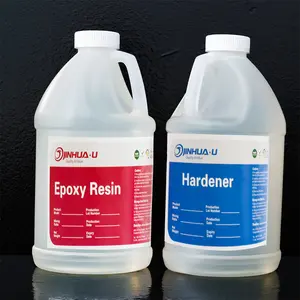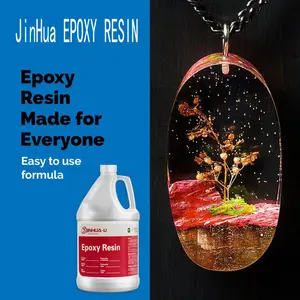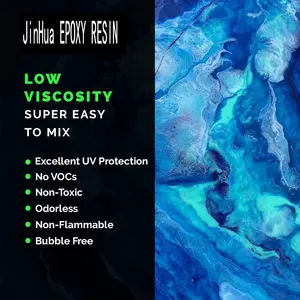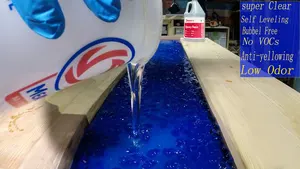
All categories
Featured selections
Trade Assurance
Buyer Central
Help Center
Get the app
Become a supplier

(183379 products available)




















































The versatility of resin art creates avenues for several works. In addition, various resin art pieces serve as standalone art or merge with functional objects.
Resin Painting
Resin painting stands out among the popular methods of art with resin. Usually, the resin mixtures are poured onto surfaces, resulting in glossy, abstract artworks. In addition, artists prefer resin because of the ease with which colors can be manipulated. Also, they integrate pigments, glitter, and other fillers to achieve distinctive effects. Also, resin paintings are mostly mounted on canvases or wooden boards. Most importantly, the resin creates a shining surface that is clean and appealing.
Resin Jewelry
One of the most prominent and expandable applications of resin art is jewelry making. Often, artists embed various items such as flowers, stones, or metal parts in resin molds. Creation of rings, pendants, earrings, and bracelets is very common and frequently made with resin. Also, the resin offers durability and an attractive appearance to the items. Therefore, it makes the items unique and eye-catching.
Resin Coasters
Resin coasters form a popular way of functional art. This is inclusive of but not limited to, integrating resin with materials to create stunning and practical drink coasters. Usually, coasters are made from a mixture of resin and other materials like wood or stone. In addition, the resin is customizable using pigments, glitters, and dyes to achieve various appearances. Frequently, coasters serve as protective and decorative items. Therefore, they transform ordinary house items into eye-catching and extraordinary ones.
Resin River Tables
River tables are among the most progressive applications of resin art in the realm of furniture. Usually, these tables are made by pouring resin into spaces between wood slabs to resemble flowing rivers. Standard epoxy resin river tables allow wood to be elevated with epoxy resin, creating outstanding visuals.
Recommonly used are pigmented and clear resin varieties. In addition, the selection depends on the desired style. Often, resin river tables create an exceptional fusion of contemporary appeal and natural charm to any interior design.
Resin Cast Sculptures
Resin casting is another common practice in making sculptures and figurines. Often, this figure is produced by creating a mold and then pouring resin into it. In addition, artists have great freedom when creating intricate designs. More importantly, resin sculptures come in various finishes, including matte and glossy, based on the painter's preference.
Several factors come to play to enhance the appeal of resin art. Below are some of these factors:
Color Schemes
Colors play an important role in determining the outcome of resin art. Often, artists make use of different color palettes to manifest the art they desire. Sometimes, they prefer bright colors to create an eye-catching painting, while other times, they may prefer pastel colors to create a calm approach to painting. In addition, the colors can be applied separately or merged. This typically generates new shades and plays around with opacity to achieve a wide range of stunning effects. Therefore, artists can add materials like pigments and dyes to the resin to achieve multiple color depths.
Shapes and Forms
Usually, resin art pieces come in different shapes and sizes. Moreover, the diverse forms are able to impact the overall richness of the artwork. In addition, artists can make use of different molds to create pieces of jewelry with diverse shaping patterns. These patterns can range from geometric to organic designs. Typically, such work makes the item more intriguing. In addition, incorporation of various forms can be employed in resin paintings. Here, the typical way is by manipulating the resin while pouring it on the canvas. Ultimately, this allows the formation of sections with fluid shapes and patterns.
Textures
One of the preferred characteristics of resin art is its texture. Functionally, it allows the addition of different materials such as powders and glitter. Usually, introduction of such materials into the resin generates surfaces that are multidimensional. This further enhances the richness and depth of the artwork. In most cases, the use of texturing tools like texture brushes produces grooves and ridges on the resin surface. This makes the piece more appealing to look at and touch.
Thematic Elements
Often, variety is observed in resin artworks in terms of themes. Normally, artists pick themes that reflect things like nature, abstract ideas, or coastal settings. Habitually, the incorporation of thematic elements gives possible directions for color selection, materials, and shapes used. Consequently, this ensures the artwork remains cohesive. For instance, a painter who opts for a marine theme may use hues of blue and green combined with elements like sand or seashells. Conversely, a painter focused on abstract themes may prefer bold colors and unique textural patterns.
Purpose and Functionality
The desired function of the art piece will further determine the type of resin art that should be settled for. For instance, resin coasters, which are typically on offer, can be applied practically as well as aesthetically in terms of protection to furniture for scratches and water marks. Ideally, items like pendant accessories can be used for daily wear to complement outfits. Moreover, larger pieces like paintings or sculptures are preferred for decoration purposes.
Size and Space Considerations
The area where the resin art will be put should also inform the decision. Usually, smaller items like rings or key chains can be placed on display in any area of the work or home space. However, larger pieces like paintings or tables may require larger spaces for effective presentation. Therefore, the overall dimension should be reviewed before buying or making the item so as to enable proper placement in the given area.
Material Quality
The quality of materials used in making epoxy resin art determines its general quality. This ensures that all the embedded materials are defined and clear if executed in high-quality resin. In addition, long-lasting resins are often scratch-resistant. Therefore, they are suited for items that are regularly handled, e.g., coasters or jewelry. Also, check for any yellowing on the resin, as yellowing can occur over time with exposure to UV light.
Style and Aesthetics
The style of the piece should blend with the existing decor of the space. For example, a coastal-themed epoxy resin table, while beautiful, might not suit a more contemporary-styled room. Also, the resin art comes in various styles, including abstract patterns and natural inclusions. In addition, they can be incorporated into minimalist or boho-chic designs. Therefore, a wide range of styles gives room to incorporate pieces that fit personal preferences and overall space aesthetics.
Maintenance and Care
Maintenance consideration is important for some resin art pieces, as they require special care. Also, items like jewelry require regular cleaning to avoid tarnishing. However, furniture pieces may need periodic applications of protective wax or polish to avoid scratches and staining. Further, some resin art pieces may be more sensitive to direct sunlight. This may include yellowing due to low-quality resin exposure.
Alibaba.com has various resin bottles, pigments, molds, and other crafting materials that can be purchased in bulk. Below are a few scenarios where buyers can benefit from stocking up on resin art supplies.
Resin Art Businesses
Usually, buyers help their businesses by sourcing quality resin art supplies in bulk. Ideally, this enables them to efficiently meet customer demand, whether for paintings, jewelry, or functional art pieces like coasters and keychains. Besides, buying materials wholesale lowers production costs. As a result, businesses can raise profit margins or, ideally, lower retail prices to boost market competition.
Workshops and Classes
Often, craft schools or workshop organizers promote the love for resin art by offering hands-on sessions. Usually, these institutions need materials in large quantities. Ideally, purchasing items like resin kits, molds, and pigments in bulk guarantees a cost-effective approach to supply each participant with the required resources. This enhances a greater learning experience. Also, the participants receive quality materials that improve their chances of creating outstanding artworks.
Retail Stores
Big retail stores enhance the availability of supplies to customers by purchasing them in bulk. Usually, they stock essential items like epoxy resin, protective gear, and various molds and pigments. This enables beginners and seasoned artists to have convenient access to what they need for their projects.
Online Stores
Often, online sellers purchase resin art supplies in bulk because of the rising demand for them. Ideally, resin art offers several opportunities. They include home décor and jewelry, making it an enjoyable and easy medium for crafters. By stocking up on materials, sellers can efficiently provide various resins, molds, and additives.
A1: Epoxy resin is best for creating art pieces. This is because it produces high-gloss finishes and clear, bubble-free surfaces. In addition, it is simple to handle. It has a long work time but cures quickly. Therefore, it is ideal for all types of resin art projects.
A2: Resin art, when appropriately done, can last indefinitely. However, over time, exposure to sunlight can cause yellowing of the resin. This may make it seem old and dull. Nevertheless, special UV-resistant resins can be used to prevent this from happening.
A3: There are many ways of sealing epoxy resin art. Some of these ways include using spray varnish or a coat of polyurethane. It helps seal the porous surface of paint to make it impermeable to moisture. Nevertheless, sealing is important for items like coasters to lengthen their longevity.
A4: Gorilla epoxy glue works well on resin surfaces as it forms a solid bond on resistant surfaces like plastic. However, it should be applied in small quantities. Too much glue will create a mess and take longer to dry. Also, the surfaces should be cleaned to ensure a strong bond.